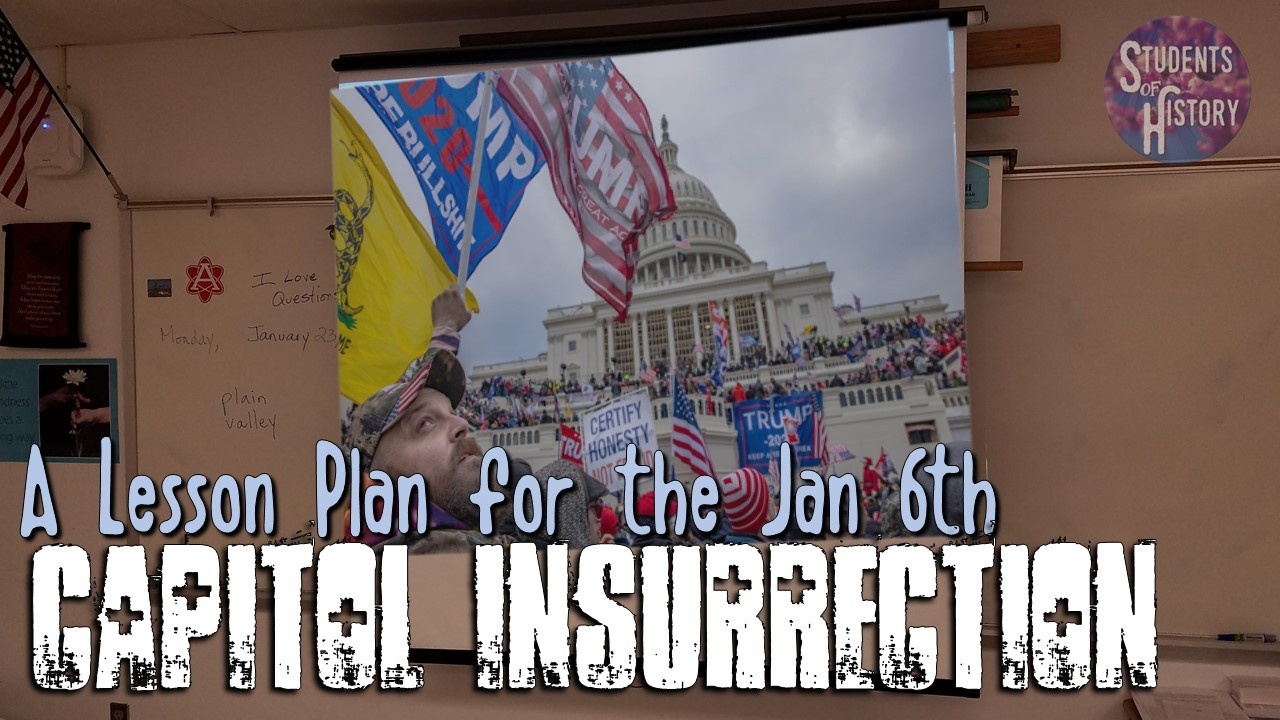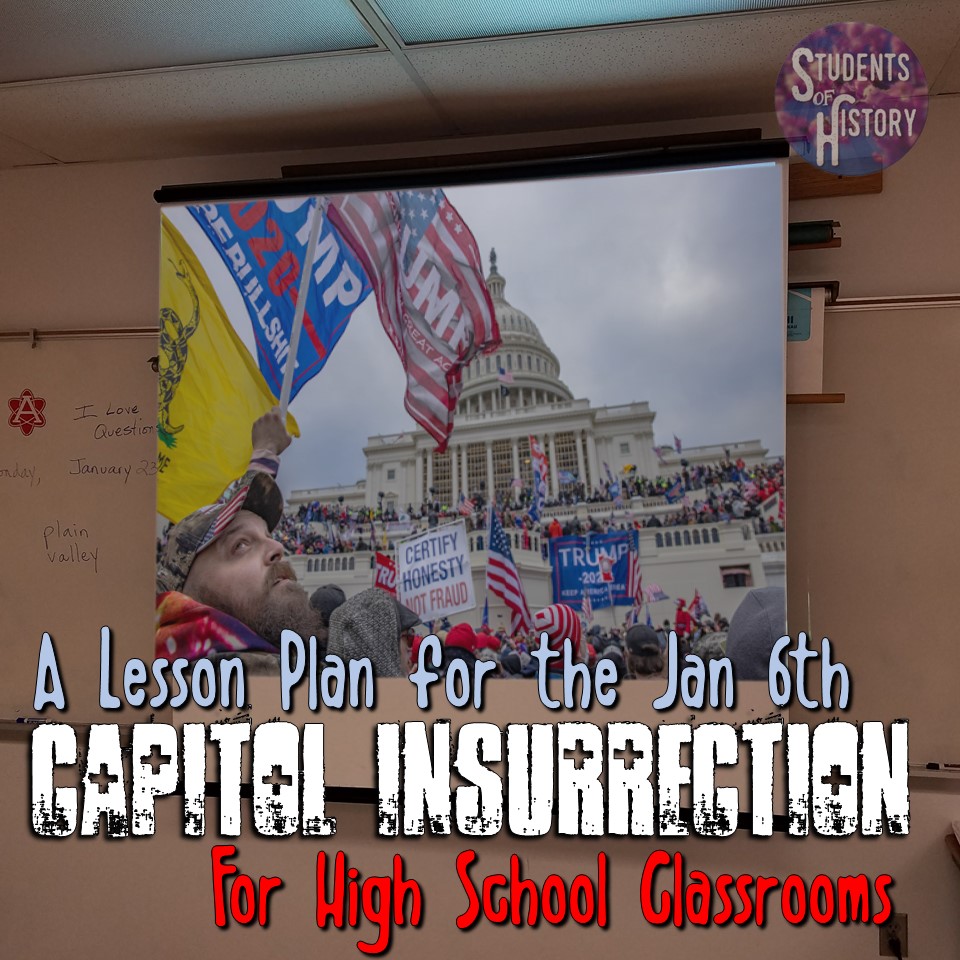January 6th Lesson Plan for High School Social Studies

The insurrection of January 6th, 2021 is something that will be taught in US History classrooms as long as American History is a part of high school.
Of course, it can be difficult to maintain the right perspective when teaching events that are so recent. However, ignoring this tragic day does a disservice to our students and to what we do as social studies teachers.
I don't recall anyone saying not to talk about 9/11 immediately after it occurred or in the years since. No one demanded that teachers ignore the fall of the Berlin Wall in 1989. Violent intruders breached what should be one of the most secure buildings on the planet, attacked police, and made violent threats against lawmakers in their hopes for a coup to overturn the will of the American democracy.
I loved what middle school teacher Dylan Huisken told the AP, “Not addressing the attack is to suggest that the civic ideals we teach exist in a vacuum and don’t have any real-world application, that civic knowledge is mere trivia.”
This must be discussed as part of your US History or American Government course.
There are some great resources our there already from Facing History, the NY Times, and PBS for how to broach the event with your class.
However, I thought I would share an easy lesson plan that you might want to try in your high school classroom. Obviously, gauge your school or community climate before undertaking a lesson like this so that you do not risk your job.
Simple 1/6 Lesson Plan
I created this simple Google Slides you can use with a warm up question, statement of facts, embedded video, and activity.
Allow students a few minutes to respond to the warm up and then hold a brief discussion to evaluate your students' understanding of the events.
The embedded video is Jordan Klepper's piece from the Daily Show. I think it is one of the best shorter options (6 min) at showing and explaining the events on Jan. 6.
A better, more thorough video is the NY Times Day of Rage. It shows in detail how violent extremists and white supremacists led the storming of the Capitol. However, it contains strong language and is long (40 minutes) for what you might need in your classroom. If you teach 90-minute blocks, it could be good though.
The New Yorker has a shorter video (12 min) of just raw footage combined to show what was going on in and around the Capitol during the siege. That might be a better option for you if you want to avoid Klepper's commentary and just show things as they happened.
Either of those videos can be used in place of the one in the Slides.
Next, you can see the Slides moves on to "What Happened & Why?". This activity is based on the US Department of Justice page containing all of its Jan 6th Capitol Breach cases.
This is a fantastic resource for students to analyze the indictments and Statements of Facts. There are hundreds of them based on the 700+ people who have been arrested for their actions that day.
I'd recommend searching for ones from your state and having students analyze those to bring it close to home. There's 1 from Hawaii and 2 from Alaska, so I'd be willing to bet there's been people arrested from every state (Edit: turns out ND and VT are the only 2 states to have no arrests).
The Statements of Facts detail what each person did, the evidence collected against them, and the crimes they are being charged with. I like these as classroom resources because they're factual, short and to the point, and include images, social media screengrabs, and tell a story.
You can select ones for your students to specifically go through or have kids go through and select their own. This can be done in pairs, small groups, or individually.
The "Case Status" column of the page shows what has since happened to each person. Some are still in jail, others have remained out on bond, and others have been sentenced and served their time.
Give students 15 minutes or so to read and try to answer the questions on Slide 6 about each one.
After this, you can come back together and try to get a big picture answer for those questions based on all the evidence that students analyzed.
An exit ticket could be to have students analyze President Trump's culpability in the events. Is it fair that those who motivated all these people to commit criminal acts have not faced charges? Or are they adults who can make their own decisions and should be solely responsible for their behavior?
The NYT also has a good analysis question: "What do you think these events say about the strength and durability of American democracy"
I hope you find some of this lesson helpful!

Want to try some lessons for free?
Try out some free lesson plans and resources for your social studies classroom!
Don't worry, your information is never shared.